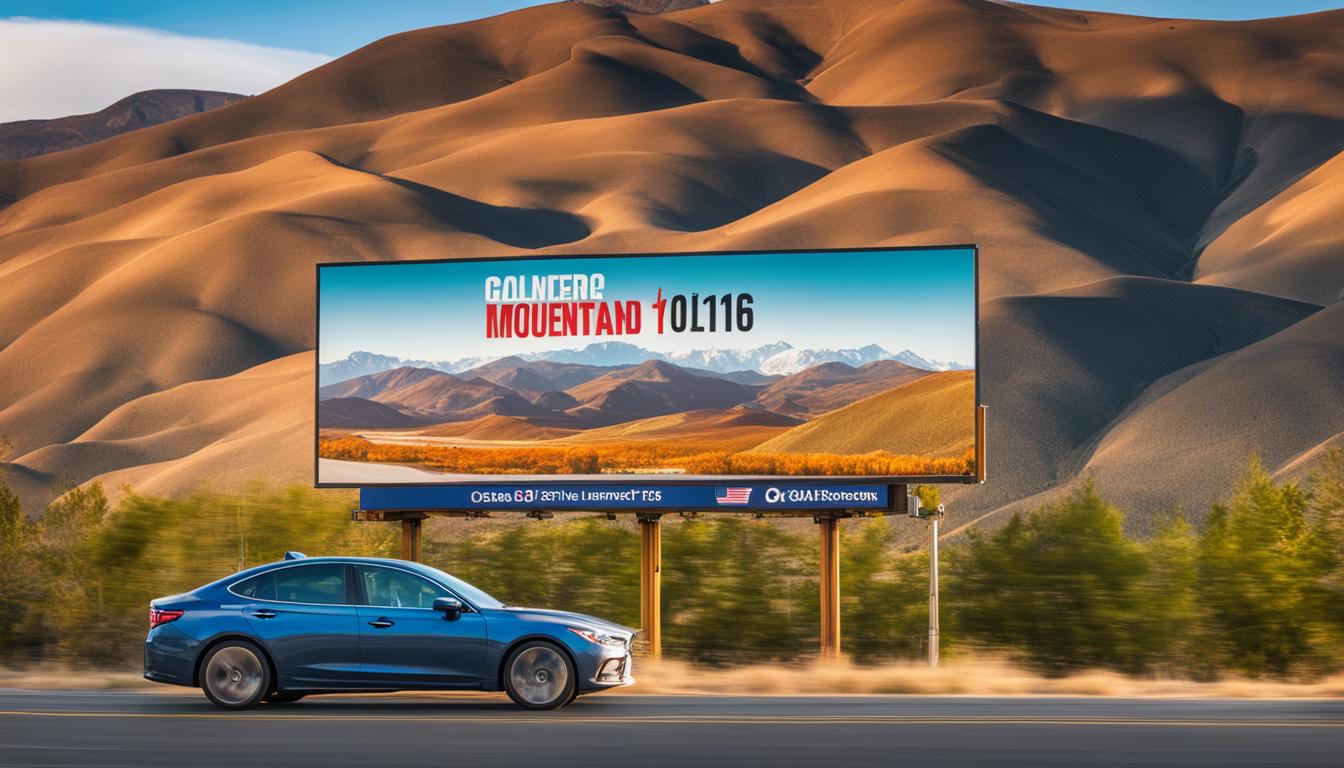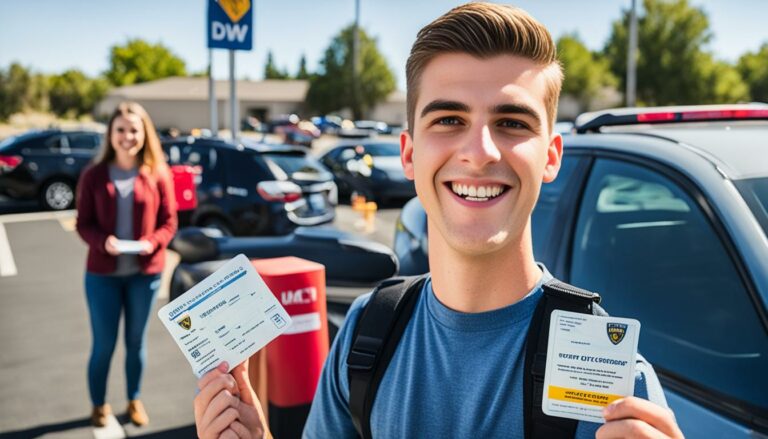Solo Driving Age Requirements in the US
In the United States, the age requirements for driving alone vary by state. Most teens can start working towards a driver’s license around age 15, but each state has slightly different requirements. The majority of states follow a Graduated Driver Licensing (GDL) program that sets licensing restrictions for teen drivers. These restrictions are in place to improve teen driver safety, as teenage drivers are at a higher risk of being involved in car crashes, especially at night. The risk of a fatal crash for 16-19-year-old drivers is nearly three times higher than for drivers aged 20 and older.
Key Takeaways:
- The driving age requirements for solo driving vary by state in the US.
- Most states follow a Graduated Driver Licensing (GDL) program for teen drivers.
- Teenage drivers are at a higher risk of car crashes, especially at night.
- The risk of a fatal crash for 16-19-year-old drivers is nearly three times higher than for drivers aged 20 and older.
- State driving age requirements aim to improve teen driver safety and prevent accidents.
Graduated Driver Licensing Program for Teen Drivers
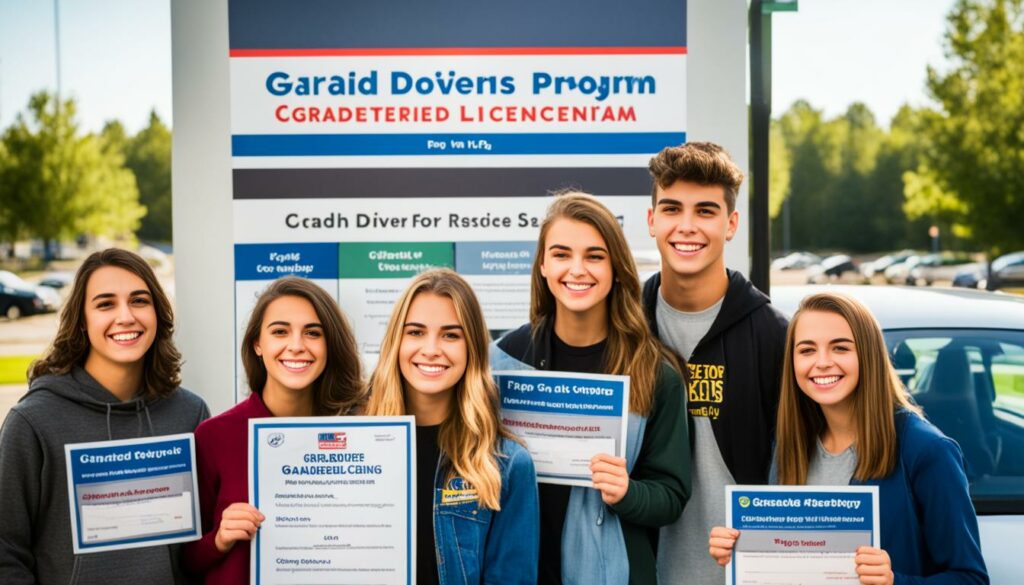
The Graduated Driver Licensing (GDL) program is a structured system adopted by many states in the United States to ensure that teenage drivers gain the necessary skills and experience before obtaining their driver’s license. This program consists of three stages that allow teen drivers to progress gradually and safely on their journey to becoming fully licensed drivers.
Learner’s Stage
In the first stage of the GDL program, known as the Learner’s Stage, teenagers must pass a written test covering the rules of the road and demonstrate their understanding of safe driving practices. Once they pass the test, they are granted a learner’s permit, which allows them to start practicing driving under the supervision of a licensed adult driver, usually a parent or guardian.
Intermediate Stage
After gaining some experience and meeting the requirements of the Learner’s Stage, teen drivers progress to the Intermediate Stage. In this stage, they must pass a road skill exam to prove their ability to handle different driving situations. Once they pass this exam, they are allowed to drive on their own, but with certain restrictions in place to ensure their safety. These restrictions may include limitations on nighttime driving, passenger restrictions, and mandatory seat belt usage.
Full Privilege Stage
Upon successfully completing the Intermediate Stage and meeting all necessary requirements, teen drivers enter the Full Privilege Stage. In this final stage of the GDL program, all driving restrictions are lifted, and teens have the same driving privileges as adult drivers. They are free to drive without any supervision, and their driver’s license is no longer classified as a provisional or restricted license.
The Graduated Driver Licensing Program provides a structured approach for teenage drivers to develop their skills and experience the responsibilities of driving. By gradually increasing their driving privileges and easing them into the responsibilities of being on the road, the program aims to reduce the risk of accidents and promote safe driving habits among teenage drivers.
| Stage | Driving Restrictions |
|---|---|
| Learner’s Stage | Supervised driving only |
| Intermediate Stage | Nighttime driving restrictions, passenger restrictions, mandatory seat belt usage |
| Full Privilege Stage | No driving restrictions |
State-by-State Teen Driver Licensing Restrictions
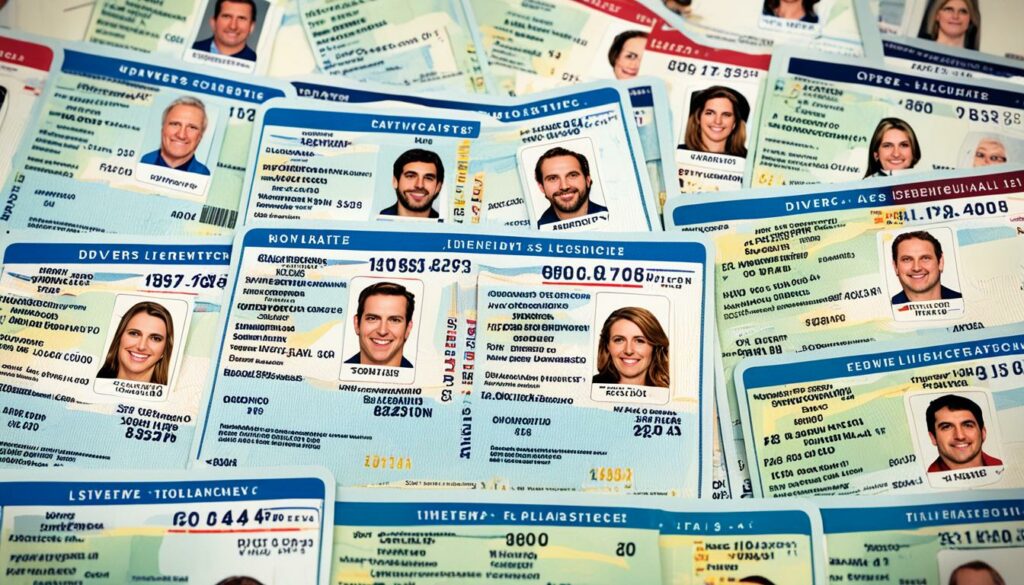
Each state in the US has its own set of teen driving laws and restrictions. The age requirements for obtaining a learner’s permit, provisional license, and unrestricted license vary by state. For example, in Alabama, teens can get a learner’s permit at age 15, a provisional license at 16, and an unrestricted license at 17. On the other hand, in Alaska, teens can get a learner’s permit at age 14, a provisional license at 16.5, and an unrestricted license at 16. Some states also have additional restrictions, such as curfews and passenger limitations, for teen drivers.
State-by-State Teen Driver Licensing Requirements:
| State | Learner’s Permit Age | Provisional License Age | Unrestricted License Age | Additional Restrictions |
|---|---|---|---|---|
| Alabama | 15 | 16 | 17 | Curfew and passenger limitations |
| Alaska | 14 | 16.5 | 16 | Curfew and passenger limitations |
| Arizona | 15.5 | 16 | 18 | Nighttime driving restrictions |
| Arkansas | 14+ | 16 | 18 | Graduated curfew and passenger restrictions |
| California | 15.5 | 16 | 18 | Nighttime driving restrictions |
These examples provide a glimpse into the variation in teen driver licensing requirements across states. It is important for young drivers and their parents to familiarize themselves with the specific regulations in their state to ensure compliance and safe driving practices.
Driving Licenses by State and Age
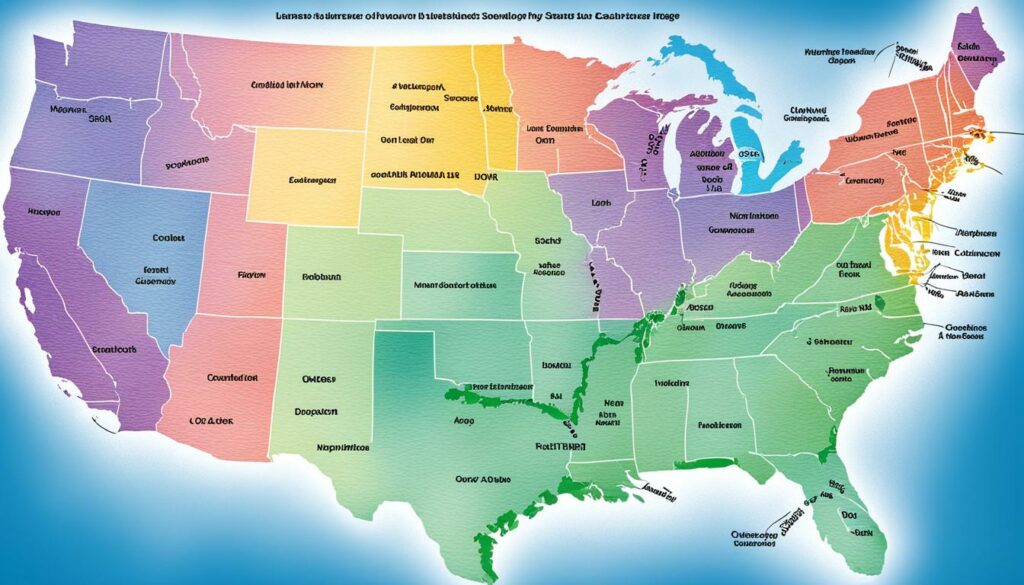
The minimum age to obtain a driving license, including learner’s permits, restricted licenses, and full licenses, varies by state. Each state sets its own requirements and age restrictions for different types of licenses. Here are some examples of driving license age requirements in different states:
California
In California, teens can obtain a learner’s permit at the age of 15.5, a restricted license at 16, and a full license at 17.
Colorado
In Colorado, the minimum age for a learner’s permit ranges from 15 to 16, depending on the specific circumstances. Teens can obtain a restricted license at the age of 16 and a full license at 18.
Michigan
In Michigan, teens can apply for a learner’s permit at the age of 14 years and 9 months. They can then obtain a restricted license at the age of 16 and upgrade to a full license at 17.
New York
New York has a tiered licensing system. Teens can get a learner’s permit at the age of 16, a junior driver’s license at 16 and 6 months, and a full license at 17.
The age requirements mentioned above provide a general idea of the differences in driving license ages across states. It is important to note that these requirements may change over time, so it is advisable to check the specific regulations in your state before applying for a driving license.
State Learner’s Permit Age Restricted License Age Full License Age California 15.5 16 17 Colorado 15-16 16 18 Michigan 14 years and 9 months 16 17 New York 16 16 and 6 months 17
The table above summarizes the learner’s permit age, restricted license age, and full license age for selected states. It is essential to understand and comply with the driving license age requirements in your state to ensure you are driving legally and safely.
Driving Age Comparison Across the USA
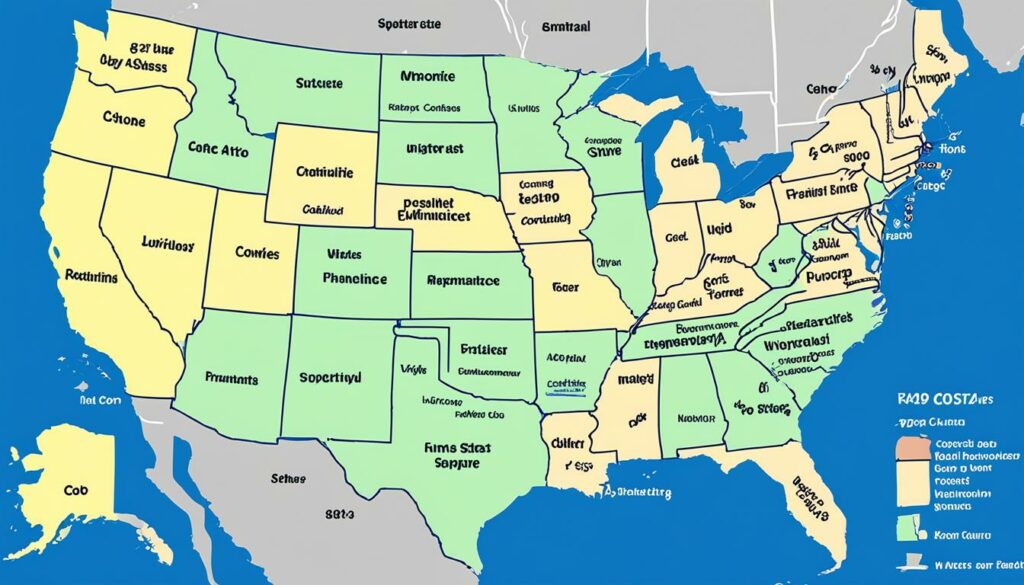
While the general minimum driving age in the USA is 16, the age for obtaining a learner’s permit, restricted license, and full license can vary significantly across states. These variations demonstrate the different approaches states take towards allowing teens to drive.
“In South Dakota, teens can get a learner’s permit at 14 and a full license at 16, making it one of the states with the lowest driving ages. On the other hand, in New Jersey, the minimum age for a learner’s permit is 16, a restricted license at 17, and a full license at 18.”
To provide a clear overview, below is a table comparing the minimum driving ages for learner’s permits, restricted licenses, and full licenses across select states:
| State | Learner’s Permit Age | Restricted License Age | Full License Age |
|---|---|---|---|
| South Dakota | 14 | N/A | 16 |
| New Jersey | 16 | 17 | 18 |
| California | 15.5 | 16 | 17 |
| Colorado | 15-16 | 16 | 18 |
As shown in the table, the driving age requirements can vary significantly, influencing when teens can legally drive on their own in each state. It is important for young drivers and their parents to be aware of the specific driving age requirements in their state to ensure compliance with the law and promote safe driving practices.
Minimum Driving Ages for Rental Cars
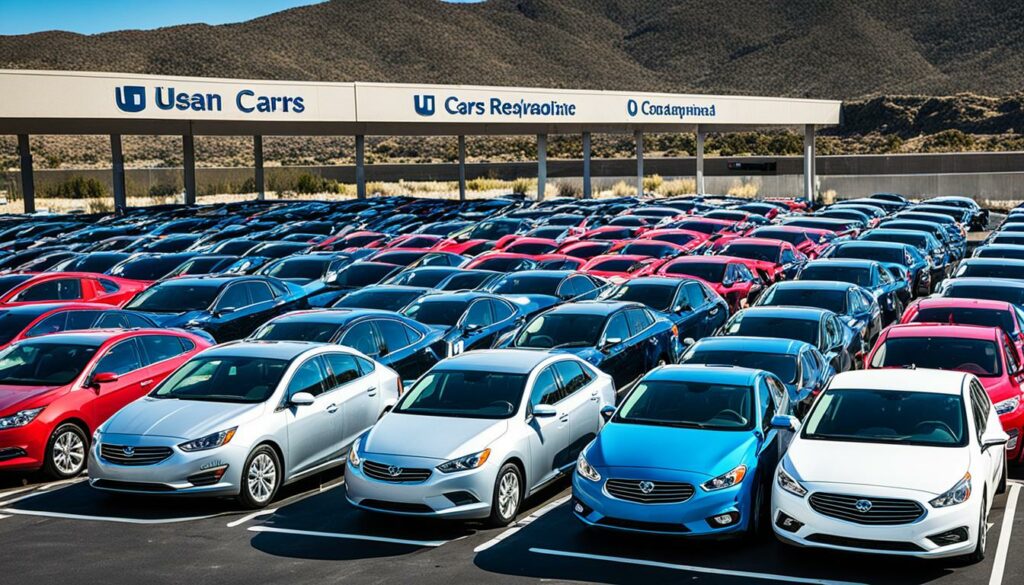
When it comes to renting cars, the minimum age requirements are determined by the rental car agency rather than by state regulations. In general, the minimum age to rent a car in the USA is 21. However, some rental car agencies may allow 18-year-olds to rent a car, albeit with additional fees or restrictions. It is important for young drivers to check with each rental car agency to understand their specific age requirements and policies.
While the legal driving age for getting a driver’s license may vary by state, rental car companies have their own criteria. This means that even if a young driver meets the minimum age requirement to drive in their state, they may not meet the age requirement set by the rental car agency. Young drivers should be aware that rental car agencies may impose additional fees or place restrictions when renting a car under the age of 21.
It is recommended for young drivers to contact rental car agencies directly to inquire about their age requirements and any additional fees or restrictions that may apply. This will help ensure that young drivers have a clear understanding of what is required before proceeding with a rental car reservation.
Did you know? While there are age restrictions for renting cars, there are also options available for young drivers. Some rental car agencies offer specialized programs for young drivers, providing them with the opportunity to rent a car at a younger age, typically 18, with certain conditions such as added fees, limited vehicle selection, or mandatory insurance coverage.
Benefits of Early Car Rental
While the legal driving age for rental cars may be higher than the minimum age for obtaining a driver’s license, there are several benefits for young drivers who can rent a car at an earlier age:
- Convenience: Renting a car can provide young drivers with convenient transportation options, especially for travel or commuting purposes.
- Independence: The ability to rent a car at a younger age allows young drivers to experience the freedom and flexibility of having their own mode of transportation.
- Travel Opportunities: Renting a car opens up opportunities for young drivers to explore new places and embark on road trips.
- Driving Experience: Renting a car at a young age provides an opportunity for young drivers to gain more driving experience, potentially improving their skills on the road.
It’s important for young drivers to weigh these benefits against the additional fees or restrictions that may be associated with renting a car at a younger age. By considering these factors and understanding the rental car agency’s policies, young drivers can make informed decisions when it comes to renting a car.
| Rental Car Agency | Minimum Age Requirement | Additional Fees/Restrictions |
|---|---|---|
| Agency A | 18 | Additional daily fee |
| Agency B | 21 | No additional fees |
| Agency C | 18 | Proof of full coverage insurance |
Effectiveness of Graduated License Programs

When it comes to teen driver safety, graduated license programs have proven to be highly effective. These programs provide young drivers with the opportunity to develop their driving skills and gain valuable experience gradually. By following a structured process and progressing through different stages, teen drivers can become more confident and responsible on the road.
Graduated license programs typically begin with a learner’s permit, allowing teens to practice driving under the supervision of a licensed adult. This stage helps them familiarize themselves with the rules of the road and gain basic driving skills. Once they pass a written test and complete a set number of practice hours, they can advance to the next stage.
The second stage is the intermediate stage, where teens can drive with some restrictions, such as a nighttime curfew or limitations on the number of passengers. These restrictions are designed to reduce the risk of accidents and help teens develop safe driving habits. During this stage, they continue to gain experience and improve their driving skills.
Finally, the last stage is obtaining a full privilege license, where all driving restrictions are lifted, and teens can drive like other adult drivers. By this point, teens have had the opportunity to gain substantial driving experience and develop the necessary skills to navigate the roads safely.
Research has shown that graduated license programs significantly reduce the risk of accidents among teen drivers. According to the Insurance Institute for Highway Safety (IIHS), states with graduated license programs have seen a 20-40% reduction in crashes involving 16-year-old drivers.
The Benefits of Graduated License Programs:
- Enhanced teen driver safety
- Development of essential driving skills
- Gradual and structured experience on the road
- Reduction in the risk of accidents
- Promotion of responsible driving habits
By ensuring that teen drivers gain experience and skills before obtaining full driving privileges, graduated license programs play a crucial role in improving road safety. They equip young drivers with the necessary tools to navigate various driving scenarios and make informed decisions behind the wheel.
“Graduated license programs help teenagers develop the skills and experience they need to become safe and confident drivers. By gradually exposing them to different driving conditions and restrictions, we’re able to reduce the risk of accidents and promote responsible driving habits.” – Dr. Sarah Adams, teen driver safety advocate
| State | Learner’s Permit Age | Intermediate Stage Age | Full Privilege License Age |
|---|---|---|---|
| Alabama | 15 | 16 | 17 |
| California | 15.5 | 16 | 17 |
| Colorado | 15-16 | 16 | 18 |
Considerations for Older Teen Drivers

As the number of older teen drivers (18 to 20-year-olds) on the road increases, some states are exploring the implementation of graduated license programs specifically tailored to this age group. These programs aim to provide similar benefits as their counterparts for younger teens, offering structured driving programs that help older teens develop their skills and gain valuable experience behind the wheel.
The introduction of graduated license programs for older teen drivers acknowledges the unique needs and challenges faced by this age group. While older teens may have more maturity and responsibility compared to their younger counterparts, they still benefit from programs that emphasize safe driving practices and gradually increase their driving privileges.
By extending graduated license programs to older teen drivers, states intend to enhance road safety and reduce the likelihood of accidents within this age group. These programs ensure that older teens are equipped with the necessary knowledge, skills, and experience to navigate various driving situations confidently.
Participating in a graduated license program for older teen drivers can also provide valuable resources and support systems. These programs often include educational materials, driving courses, and mentorship opportunities, helping older teens build a solid foundation of driving skills while fostering responsible behavior on the road.
While license requirements for older teen drivers may vary by state, the introduction of dedicated programs for this age group demonstrates a commitment to promoting safe driving practices across all age ranges. By investing in the development and education of older teen drivers, states aim to create a safer driving environment for everyone on the road.
If you or someone you know falls into the older teen driver category, it’s essential to familiarize yourself with your state’s license requirements and explore any available graduated license programs. These programs can provide valuable guidance and resources as you begin your journey as a first-time driver.
Remember, driving is a privilege that comes with great responsibility. By embracing the opportunity to participate in graduated license programs, older teen drivers can ensure they have the skills and experience necessary to navigate the roads safely and confidently.
Learner’s Permits and Restricted Licenses
When it comes to learner’s permits and restricted licenses, there are specific regulations and restrictions that young drivers need to be aware of. Let’s take a closer look at what these permits and licenses entail.
Learner’s Permits
Learner’s permits are the first step towards obtaining a driver’s license. They allow teenagers to begin their driving journey under supervised conditions. To obtain a learner’s permit, applicants typically need to pass a written test that assesses their knowledge of driving regulations and road signs. Additionally, most states require a certain number of practice hours, where the learner driver must be accompanied by a licensed adult.
Restricted Licenses
Once a teenager has gained some driving experience with a learner’s permit, they can apply for a restricted license, also known as an intermediate license. Restricted licenses have specific restrictions and limitations designed to ensure the safety of young drivers.
Some common restrictions include:
- Night Driving Curfews: Teenagers may have limitations on driving during nighttime hours, usually between 10 pm and 5 am. This restriction aims to minimize the risks associated with driving at night.
- Passenger Limitations: Restricted licenses often come with restrictions on the number of passengers a young driver can have in the car. This limitation is intended to prevent distractions and create a safer driving environment.
- Cell Phone Restrictions: Some states may impose restrictions on cell phone use while driving for restricted license holders to minimize distractions and promote focused driving.
- Seat Belt Requirements: All drivers and passengers, including those with restricted licenses, are required to wear seat belts while operating a vehicle.
It’s important for teenagers and their parents to familiarize themselves with these restrictions as failure to comply could lead to penalties and the possibility of delayed progression to a full license.
Understanding and adhering to learner’s permit and restricted license regulations are crucial steps in preparing young drivers for safe and responsible driving habits. These restrictions help build necessary skills and instill good driving habits that will benefit new drivers throughout their lives.
| State | Learner’s Permit Age | Restricted License Age |
|---|---|---|
| Alabama | 15 | 16 |
| Alaska | 14 | 16.5 |
| California | 15.5 | 16 |
| Colorado | 15 to 16 | 16 |
Full Licenses and Driving Independently
Once teens reach the minimum age set by their state, they can obtain a full license, also known as an unrestricted license, which grants them the freedom to drive independently like other adult drivers. To acquire a full license, teens are required to meet certain requirements, including passing a driving test and completing the necessary driving hours.
Having a full license allows teens to enjoy the privileges of driving without the restrictions that were imposed during the learner’s permit and restricted license stages. It signifies that they have demonstrated the necessary skills and knowledge to navigate the roads safely and responsibly.
With a full license, teens can experience the thrill of driving independently and gain invaluable real-world driving experience. It opens up a world of possibilities and expands their horizons, enabling them to travel, commute, and explore with greater convenience and freedom.
Driving independently not only provides convenience, but it also fosters personal growth and independence for teens, empowering them to take control of their transportation needs. Whether it’s driving to work, running errands, or simply enjoying a leisurely drive, having a full license gives teens the confidence to handle various situations on the road.
However, it’s crucial for teens to remember the responsibility that comes with driving independently. They must continue to prioritize safety, adhere to traffic laws, and practice defensive driving techniques to protect themselves and others on the road.
Overall, obtaining a full license is an exciting milestone for teens as it marks their transition into adulthood and signifies their readiness to take on the responsibilities of driving independently.
Conclusion
The driving age requirements for solo driving in the United States vary from state to state. Each state has its own laws and regulations regarding the minimum age for obtaining a driver’s license. However, most states have implemented a Graduated Driver Licensing (GDL) program to ensure that teen drivers acquire the necessary skills and experience before driving on their own.
The primary objective of these programs and age restrictions is to enhance teen driver safety and reduce the risk of accidents. By gradually allowing young drivers to progress through different stages, such as obtaining a learner’s permit and a restricted license, they can develop their driving abilities in a controlled manner. These restrictions may include night driving curfews and passenger limitations, which are designed to minimize the potential hazards associated with inexperienced teen drivers.
It is crucial for both young drivers and their parents to be familiar with the specific driving age requirements in their state. By knowing and adhering to these regulations, they can ensure compliance with the law and promote responsible and safe driving practices. Understanding the importance of gaining experience and skills before obtaining a full license, and the role of GDL programs in achieving this, can ultimately contribute to a safer driving environment for all.
FAQ
What is the driving age in the United States?
The driving age in the United States varies by state. Most teens can start working towards a driver’s license around age 15, but each state has slightly different requirements.
What is the purpose of the Graduated Driver Licensing program?
The Graduated Driver Licensing (GDL) program is designed to improve teen driver safety by setting licensing restrictions for teen drivers. It consists of three stages: Learner’s Stage, Intermediate Stage, and Full Privilege stage.
Are there state-by-state teen driver licensing restrictions?
Yes, each state in the US has its own set of teen driving laws and restrictions. The age requirements for obtaining a learner’s permit, provisional license, and unrestricted license vary by state.
What are the age requirements for driving licenses by state?
The age requirements for driving licenses vary by state. For example, in California, teens can get a learner’s permit at age 15.5, a restricted license at 16, and a full license at 17.
How does the driving age compare across the USA?
The driving age varies significantly across states. Some states have lower driving ages, such as South Dakota where teens can get a learner’s permit at 14 and a full license at 16. In contrast, New Jersey has a higher minimum age for a learner’s permit at 16.
What is the minimum age to rent a car in the USA?
The minimum age to rent a car in the USA is generally 21. However, some rental car agencies may allow 18-year-olds to rent a car with additional fees or restrictions.
Are graduated license programs effective in improving teen driver safety?
Yes, graduated license programs have been proven effective in improving teen driver safety. These programs allow teens to develop their driving skills and gain experience gradually.
Are there considerations for older teen drivers?
Some states are considering implementing graduated license programs for older teens (18 to 20-year-olds) to help them develop driving skills and gain experience in a structured manner.
What are the restrictions for learner’s permits and restricted licenses?
Learner’s permits require supervised driving and a set number of practice hours, while restricted licenses often have night driving curfews, passenger limitations, and other safety-related restrictions.
What is a full license?
A full license, also known as an unrestricted license, allows teens to drive independently like other adult drivers, without the restrictions imposed during the learner’s permit and restricted license stages.
What are the driving age requirements in the US?
The driving age requirements in the US vary by state. It is important for young drivers and their parents to be aware of the specific driving age requirements in their state to ensure compliance with the law and promote safe driving practices.

